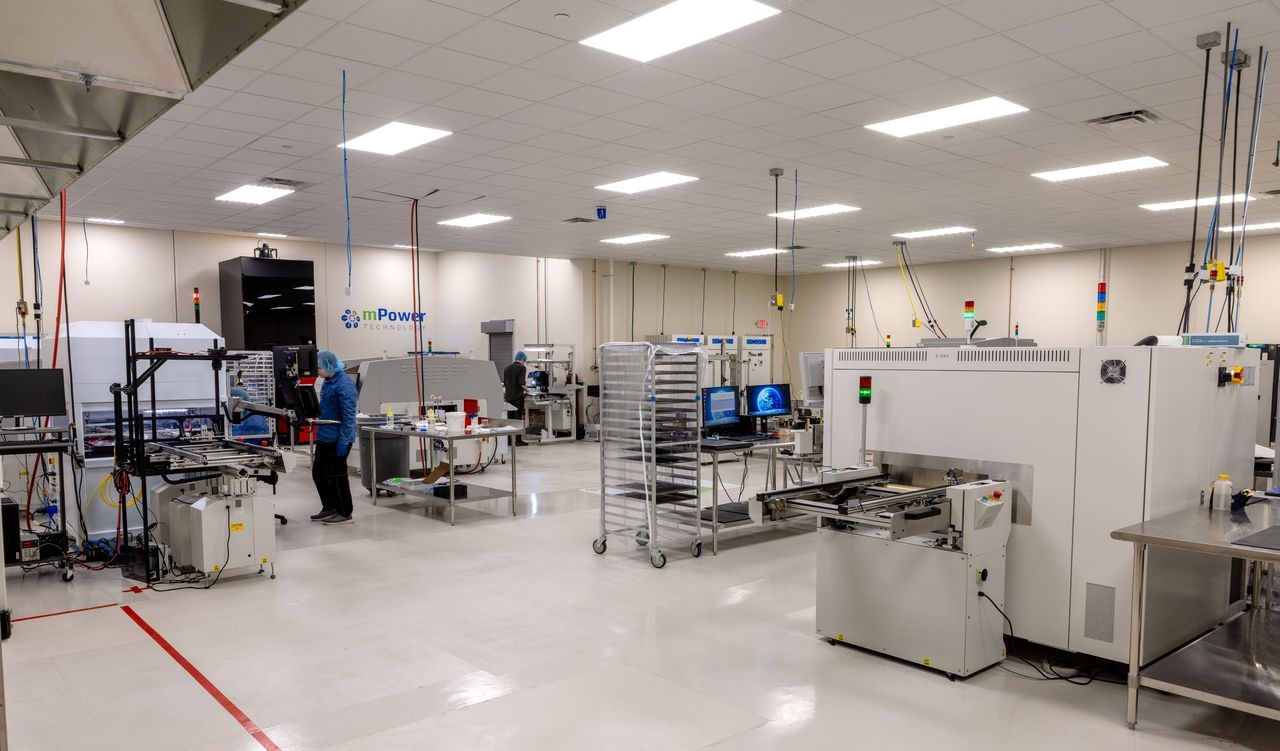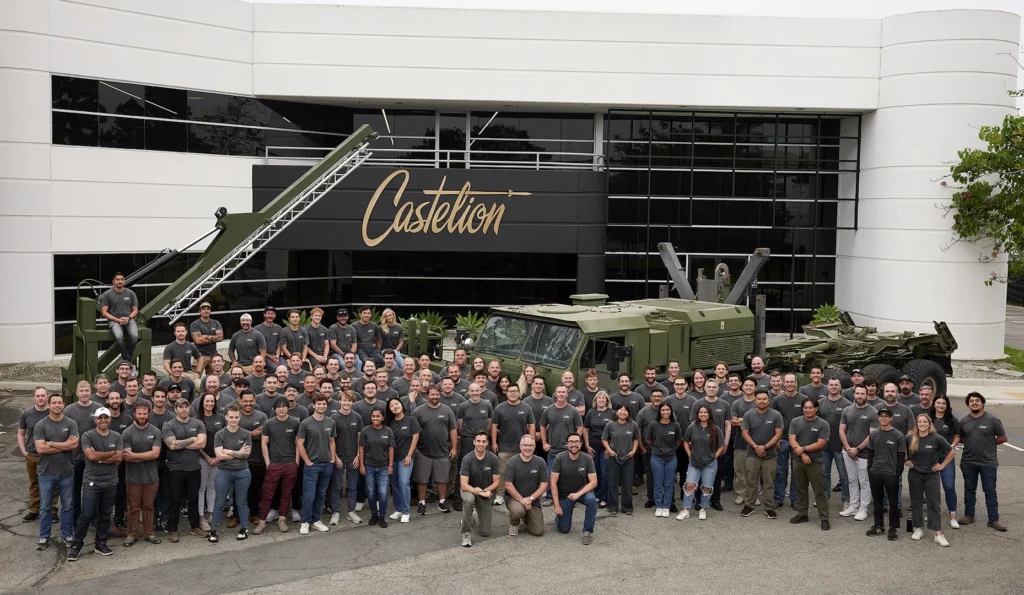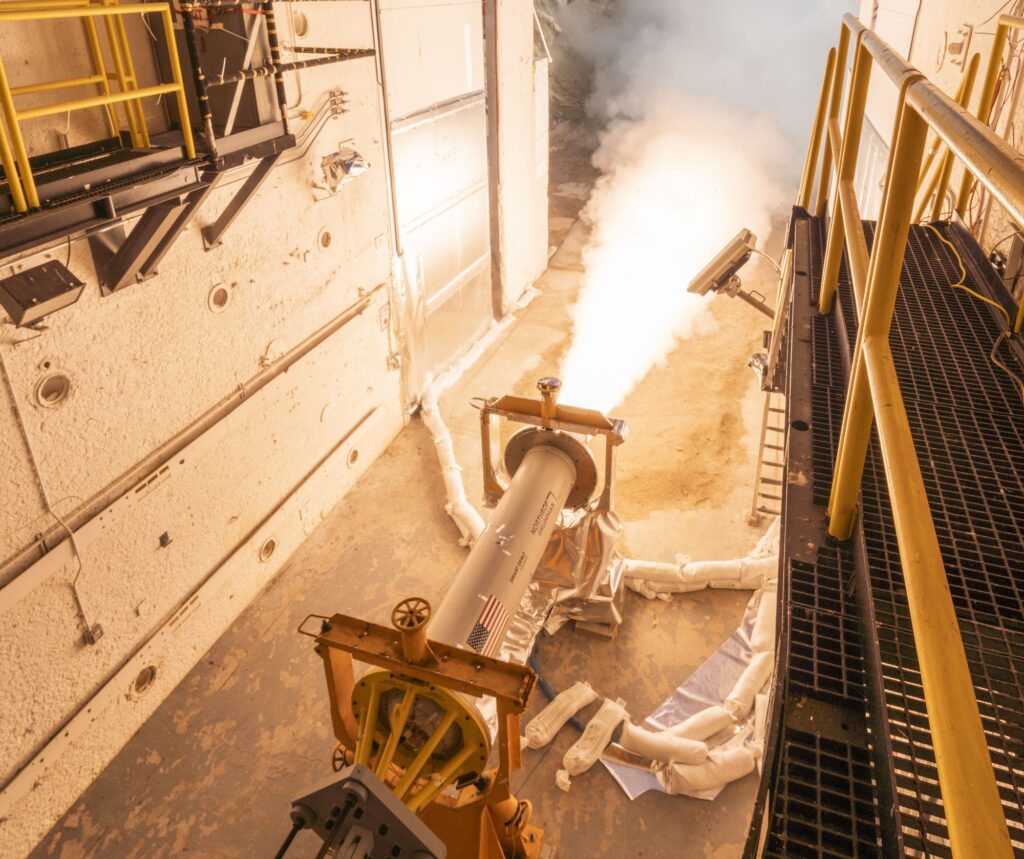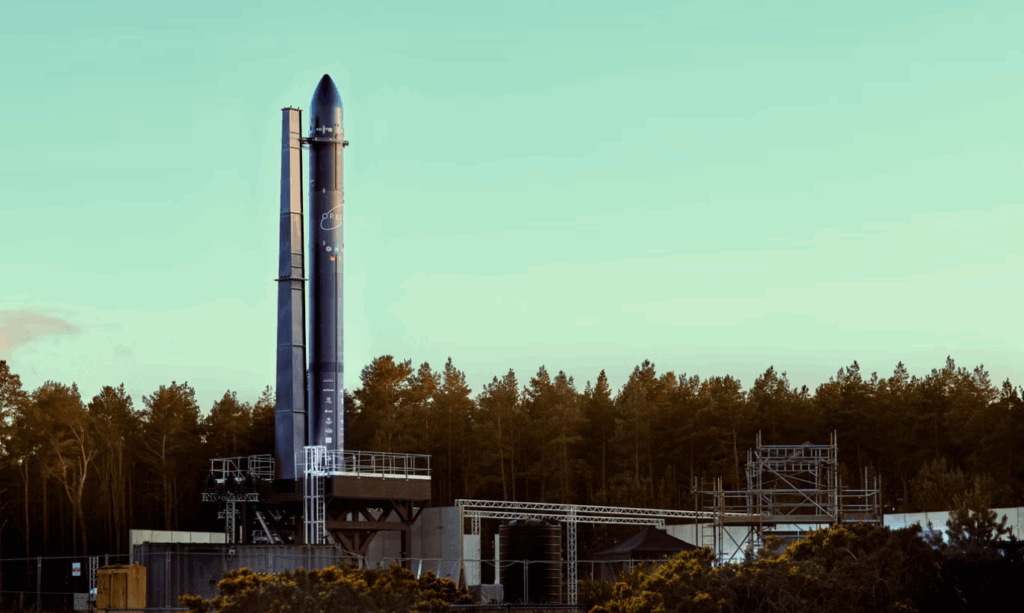Now Reading: Automated satellite solar module production ramps up in New York
-
01
Automated satellite solar module production ramps up in New York
Automated satellite solar module production ramps up in New York


TAMPA, Fla. — New Mexico-based mPower Technology has started automated, high-volume production of its space-grade solar modules in New York, the company announced Nov. 11 as it ramps up to meet demand from satellite constellations.
“Typically, it’s a very manual process,” mPower CEO Kevin Hell said in an interview, “very high-touch labor, very expensive — and it hasn’t been automated to date.”
The company’s modules are manufactured using commercial off-the-shelf silicon-based processes and equipment, which Hell said makes them more customizable and less expensive to produce than traditional solar hardware made with gallium arsenide semiconductor material.
Contract manufacturer Universal Instruments has ramped up automated production to an annual capacity of 1 megawatt since initial validation runs began this summer at its Conklin, New York, facility. Hell said the company is set to double output with an additional production line by mid-2026.
“We’re not aware of anything that’s larger in terms of throughput capacity,” Hell said, describing the facility’s planned scale as roughly four times that of a typical gallium arsenide-based manufacturer.
“Gallium arsenide has primarily powered geosynchronous satellites — limited, one-off missions,” he added.
“We’re now talking about large [low Earth orbit (LEO)] constellations … lunar missions, space-based power,” all of which are demanding increasing amounts of power.
The largest contract mPower has announced involves providing solar modules for more than 200 Lightspeed broadband satellites in LEO, which prime contractor MDA Space is building for Canada’s Telesat. SpaceX is slated to begin serial Lightspeed launches in early 2027.
That program represents more than 1.1 megawatts of solar power. The satellites are designed to operate for 10 years in orbit, roughly double the design life of other LEO broadband spacecraft flying closer to Earth.
Other customers of mPower’s interconnected photovoltaic DragonSCALES technology include Lynk Global, Blue Origin, Firefly Aerospace and Gravitics. However, Hell said only six satellites currently use its technology in orbit.
In August, Lockheed Martin Ventures joined mPower’s investors, increasing a roughly $21 million Series B round to more than $24 million.
In addition to helping scale production for growing commercial and government demand, Hell said the additional capital will fund research and development to improve performance and radiation resilience in multiple orbits, including potential lunar applications.
“Typically, a constellation has to replenish satellites as their solar array power degrades,” Hell added, “but if you’re able to increase the radiation resistance and radiation recovery, you’re able to extend the overall mission life,” and therefore launch fewer spacecraft.
Lockheed’s support also brings deeper expertise for the U.S. defense market, where Hell pointed to growing national security interest in domestic production.
Stay Informed With the Latest & Most Important News
Previous Post
Next Post
-
 012024 in Review: Highlights from NASA in Silicon Valley
012024 in Review: Highlights from NASA in Silicon Valley -
 02Panasonic Leica Summilux DG 15mm f/1.7 ASPH review
02Panasonic Leica Summilux DG 15mm f/1.7 ASPH review -
 03How New NASA, India Earth Satellite NISAR Will See Earth
03How New NASA, India Earth Satellite NISAR Will See Earth -
 04And Thus Begins A New Year For Life On Earth
04And Thus Begins A New Year For Life On Earth -
 05Astronomy Activation Ambassadors: A New Era
05Astronomy Activation Ambassadors: A New Era -
06SpaceX launch surge helps set new global launch record in 2024
-
 07From Polymerization-Enabled Folding and Assembly to Chemical Evolution: Key Processes for Emergence of Functional Polymers in the Origin of Life
07From Polymerization-Enabled Folding and Assembly to Chemical Evolution: Key Processes for Emergence of Functional Polymers in the Origin of Life




















